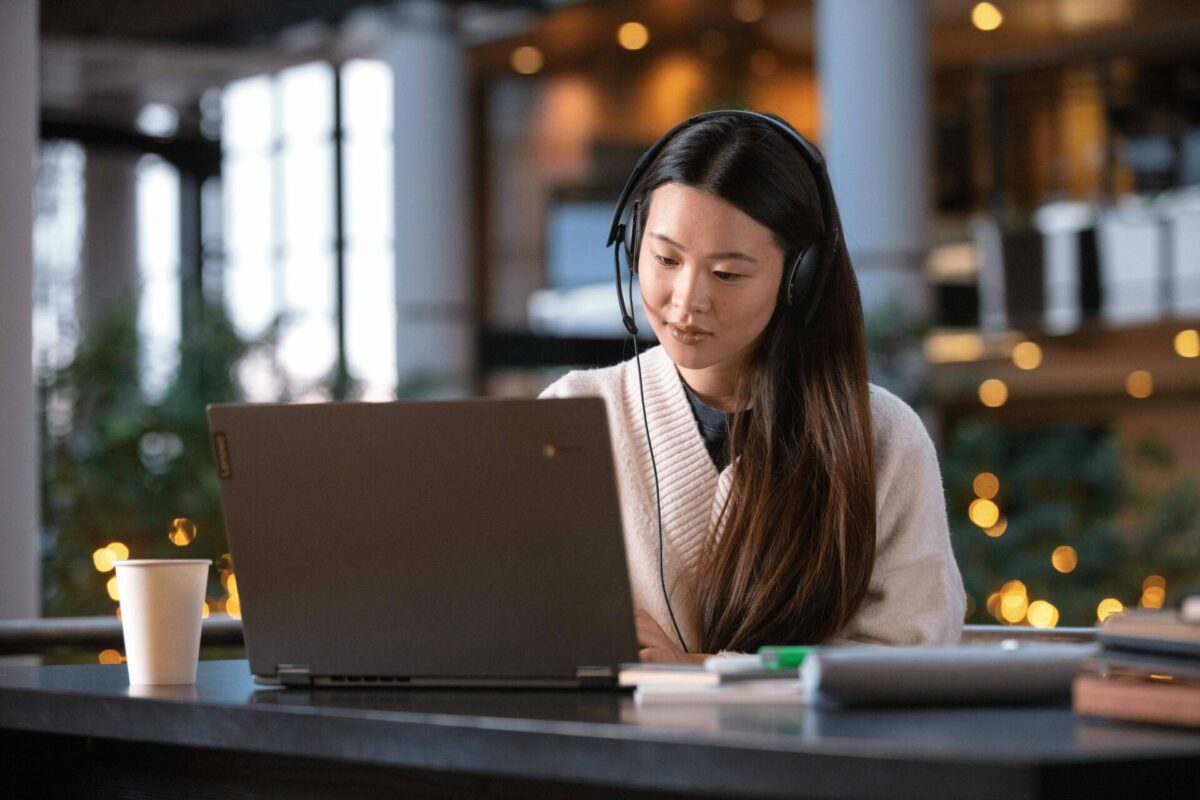Audio technology has become the facilitator for Hybrid-learning

Jane Craven, Sales Director UK&I at EPOS
Devices like laptops and computers are central to effective remote learning. Yet as the pandemic has evolved over the last 18+ months we have seen a notable shift in the tools and solutions needed to maintain a successful hybrid learning environment. Ultimately, creating an effective and sustainable solution needs to go beyond just the device a student is using. Research from our report; ‘Investing in the Age of Listening: The Importance of Audio in a Reimagined World’, found that 86% of decision makers – including in the education sector – believe that audio tech has become more important in the last year, and two-thirds say that audio equipment matters more than the type of laptop being used.
With the onset of the COVID-19 pandemic, students and teachers alike found themselves displaced. For many, the sudden transition to online learning was far from ideal. Maintaining global education efforts during a global pandemic was a massive undertaking for teachers and education institutions around the world – particularly from a technology perspective. They were required to rapidly digitize, making use of collaboration solutions like Zoom and Microsoft Teams.
Quality audio is conducive to positive learning experiences
Audio underpins all collaboration solutions, and while platforms like Zoom proved instrumental at the outset of the pandemic it was clear that in a virtual setting with compromised audio the learning experience is made redundant. Without quality audio students cannot engage, let alone understand what is being discussed. They cannot focus on learning without clear audio and similarly, teachers and educators require quality audio solutions to enable them to communicate and engage with their class. Without good audio, both teachers and students risk missing out on crucial information and ultimately the effectiveness of the learning experience suffers.

Poor audio can have a range of negative consequences, aside from connectivity and background interference, it can impact wellbeing. For example, our EPOS research report, ‘Reimaging Education with High Quality Audio’, found that 35% of end-users often feel a sense of frustration, irritation, and annoyance due to bad audio experiences, while 25% encounter moments of stress and a further 15% even feel embarrassment or less confident because of their audio. As a result of this, students can struggle to concentrate and engage with lessons.
Comparatively, good quality audio alleviates these types of pain points, our research found that 37% of end users believe good quality audio can reduce miscommunication, while 40% say that it can reduce the need for information to be repeatedly and a further 37% say it prevents participants from missing critical information.
What’s next for audio in education?
Fortunately, the education sector has demonstrated it is forward-thinking in its adoption of technology solutions. Not only has audio technology become more important but for many decision-makers (54%) believe it is essential.
This belief is reflected by investment within the sector, nearly half of respondents (49%) plan to invest in new audio equipment at least every two to three years. This bodes well for the sector making a firm commitment to enabling hybrid learning – especially for higher education where it digital solutions are already providing greater control over schedules, reducing time spent travelling, and optimizing the digital sharing of learning materials.
Yet there is still progress that must be made, despite clear interest and desire in investing in the right technology solutions only 37% of education providers have sought help when purchasing audio devices. More needs to be done to engage the sector to help them identify which solutions are best suited for their student and teacher need. This is especially true given the wide range of devices currently available, there are many factors decision makers need to consider when selecting collaboration solutions. Just as no two individuals are the same, the devices that we use and the way we work and learn needs to be considered. Depending on function, personal style, budget, and feature use there are options to meet every learning style.
Currently, as is the case in many sectors, there is an overreliance on consumer-grade products. These solutions often deliver a sub-par audio experience compared with what is needed. With educators and students having to make use of multiple devices and technologies, whether it’s a smartphone, tablet, laptop, or headset, there is a clear need for simple and easy to use equipment that can pair with multiple devices. This way, virtual learning can edge closer to the physical in-class experience.
The pandemic has provided a steep learning curb for the education sector with much trial and error. As we look towards the future, we can see promising trends developing, however, institutions must take an active role and engage with students, teachers, and resellers to find the solutions that’ll allow hybrid learning to flourish.











Responses